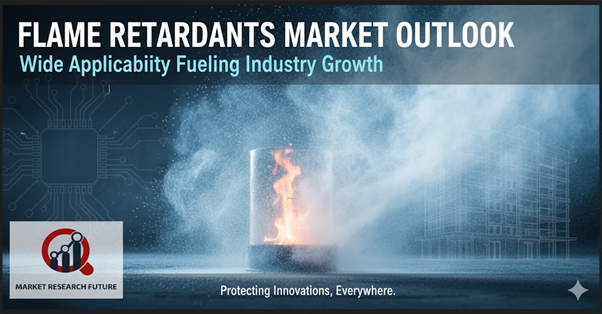
Flame Retardants Market Overview
The rising emphasis on safety has sparked the demand for safety equipment, including flame retardants. With this elevated demand, the global flame retardants market hit the valuation mark of USD 9.25 billion in 2024, which is expected to reach USD 17.6 billion by 2035. This advancement is set to occur at a moderate CAGR of 6.02% through 2035.
Flame retardants are chemicals added to materials to prevent or slow down the spread of fire. Since their introduction, they have been widely used in numerous consumer and industrial applications to reduce ignition risks and enhance fire safety.
Applications of Flame Retardants
Flame retardants are commonly used in the following products:
- Foam, upholstery, mattresses, carpets, curtains, and fabric blinds.
- Electronics and electrical equipment, including wires, cables, computers, laptops, phones, televisions, and home appliances.
- Building and construction materials, such as electrical wires and insulation foams made of polystyrene and polyurethane.
- Transportation components, including seats, bumpers, overhead bins, and seat covers used in cars, airplanes, and trains.
Market Dynamics and Composition
Flame retardants are available in numerous variations, generally classified by their chemical composition- bromine, chlorine, phosphorus, nitrogen, metals, or boron. Brominated flame retardants are among the most widely used types.
However, many traditional flame retardants have been phased out due to environmental persistence and potential bioaccumulation in humans and animals. Growing awareness of these impacts has prompted stricter regulations and encouraged the adoption of safer, sustainable alternatives.
Health and Environmental Concerns
Flame retardants, especially those containing halogens, have been linked to potential health hazards. As a result, global regulatory bodies are enforcing tighter standards for environmental and human safety.
Several halogenated compounds, such as hexabromocyclododecane (HBCD), have been banned or restricted in regions like the European Union, Japan, and Canada.
Shift Toward Sustainable Alternatives
The industry is experiencing a major shift toward non-halogenated flame retardants, particularly those based on phosphorus and aluminum compounds. These alternatives are gaining traction for their lower toxicity and environmental compatibility.
For instance, aluminum trihydroxide is increasingly used as a safer substitute in product formulations. Demand is particularly strong across applications such as polyolefins, epoxy resins, PVC, engineering thermoplastics, and rubber.
Growth Drivers
- Rising enforcement of fire safety and prevention laws across industries.
- Growing consumer awareness of fire safety in electrical and household products.
- Increasing use of non-halogenated and eco-friendly compounds in product manufacturing.
- Expanding demand from the construction, automotive, and electronics sectors.
Key Market Trend
A key trend shaping the market is the growing investment in eco-friendly, halogen-free flame retardants. These materials not only meet regulatory standards but also align with global sustainability goals.
Manufacturers are now focusing on developing bio-based and low-toxicity flame-retardant solutions to capture emerging opportunities in green chemistry.